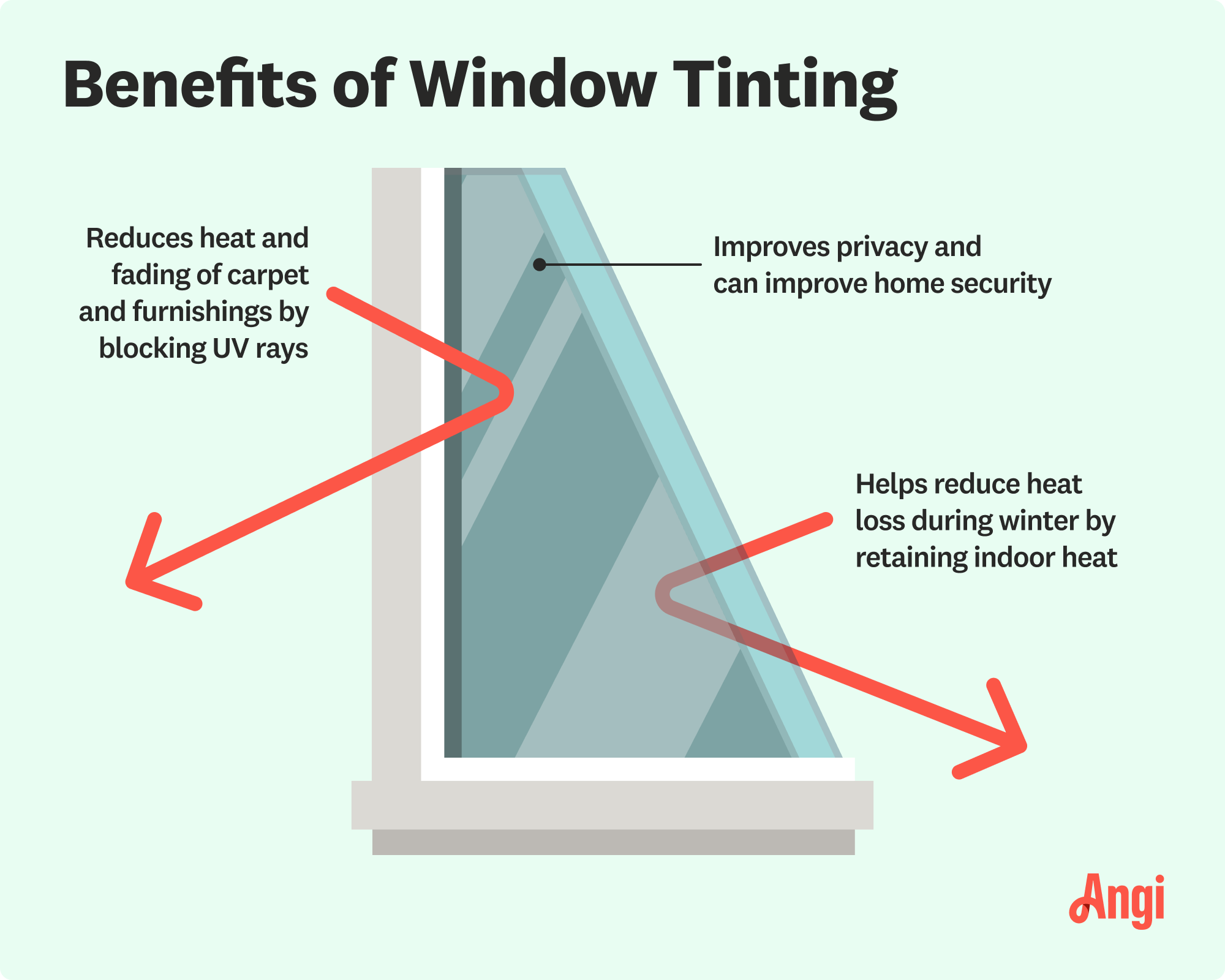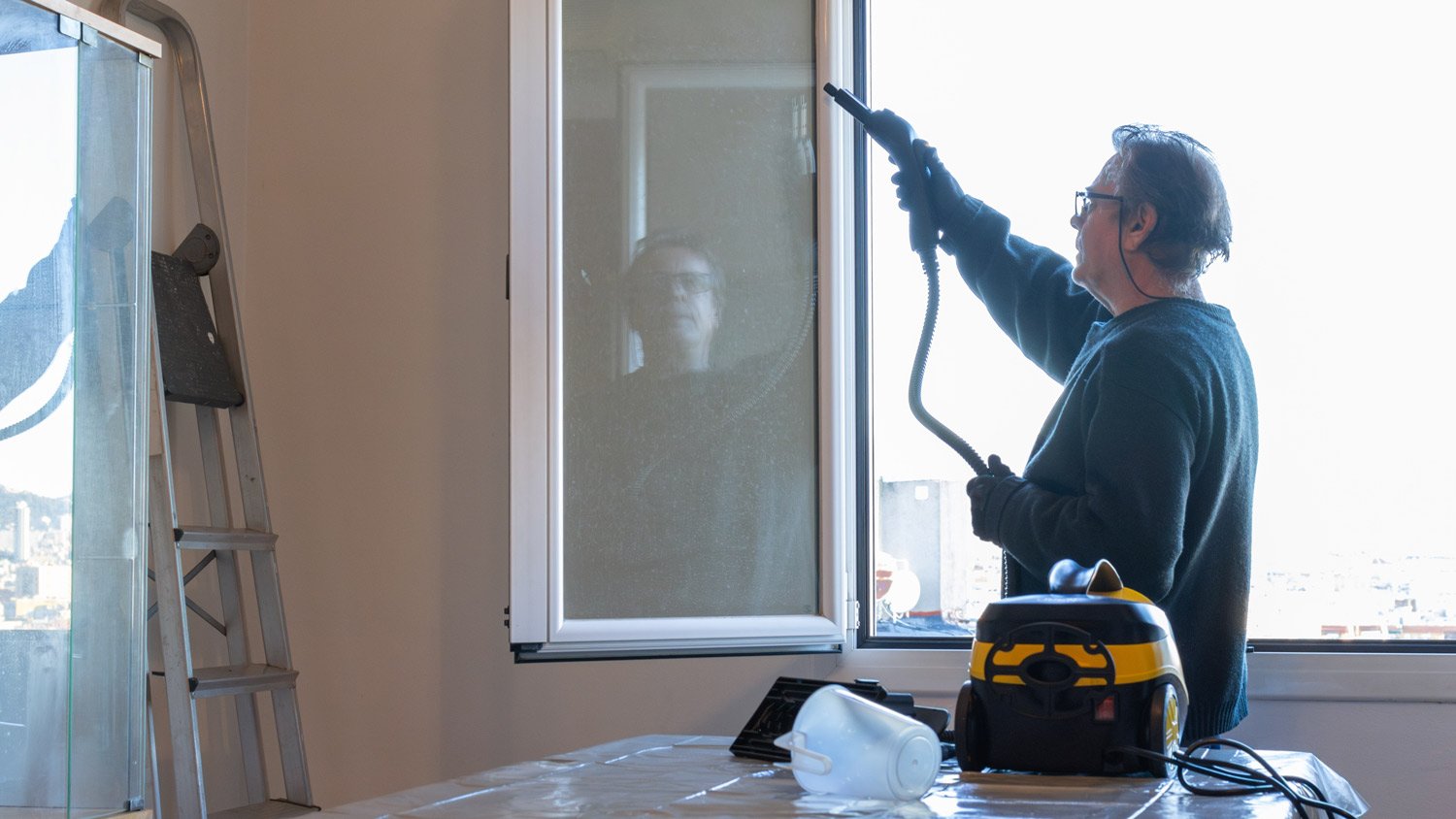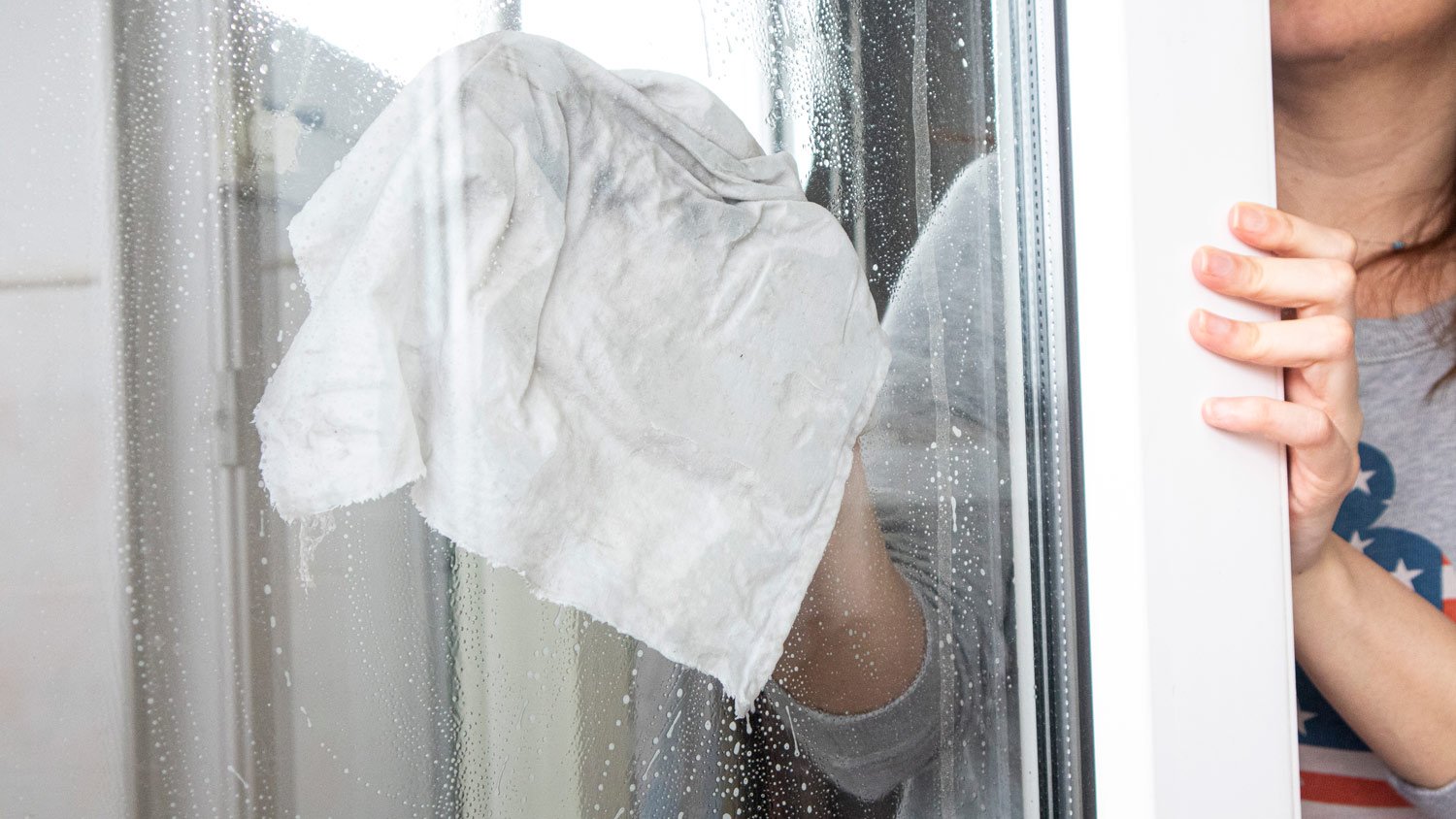
Find out the average home window tinting cost, key price factors, and ways to save. Get transparent estimates for your window tinting project.
All it takes is some heat, adhesive remover, and a little elbow grease


Removing and replacing home window tinting costs around $50 to $300 per window, but hiring a pro saves you time since this can be a long, labor-intensive project.
Improper window tint removal can damage your windows or leave behind stubborn, hard-to-clean residue.
Window tinting pros have the necessary tools, materials, and skill to handle complex window shapes, stubborn residue, and delicate glass.
Want to remove the old tint from one or more of your windows? With the proper tools and an afternoon to spare, you should be able to tackle this job on your own. Below, we’ll walk you through how to remove window tint from home windows, with multiple methods for peeling off the film and scraping away the adhesive.

Window tint is a thin layer of laminate that homeowners and businesses install on windows, particularly windows that get a lot of sunlight. Window tint is also sometimes referred to as window film.
Why apply a window tint? There are various pros and cons of tinted windows, but for most homeowners, the advantages outweigh the drawbacks.
For instance, window tint can reduce light transmission (and glare) and heat from direct sunlight, and it can also protect people inside from harmful UV rays. Depending on the type of window tint, the tinting can also add a level of security and privacy and reduce a window’s likelihood of shattering. Some window tints are purely decorative.
You can also install window tint on your car windows for the same reasons.
There are a few reasons you might want to remove old window tint from a home window:
Perhaps you purchased a home or moved into a rental with an existing window tint, and you simply don’t want it. In other cases, a window tint you installed years ago may be old and due for an upgrade to make it look a little nicer.
If your window tint was improperly installed, it may start to bubble over time. Unfortunately, there’s not much you can do about bubbling other than removing the film and installing a new one.
There is one upside to bubbling window tint: Bubbling means the adhesive is failing, which should make the film much easier to remove and the adhesive easier to scrape or wipe off.
Exposure to the sun will discolor your window tint over time. Eventually, the film will start to turn purple. Not only is this unattractive, but it also means the tint isn’t able to do its job fully—UV ray protection diminishes as the film turns purple.

There are technically two stages to removing window tint, each with a handful of methods. The primary task is removing the film itself (we’ll recommend four strategies below), but afterward, you’ll need to remove any remaining sticky adhesive (for which we have four more strategies in the next section).
So, first things first, here’s how to remove window tint from your home window using one of four methods:
Heat is key to removing the window film, especially during the colder months. Hold the hair dryer about 4 to 6 inches away from the exterior of the glass to warm it up. Have an assistant on the inside ready to start peeling from a corner.
As you heat up the glass, the film should become easy to peel from the window. Slow and steady: Make sure the window is heated enough before peeling back, or it may splinter and leave small bits of tinting in place. You may need to use a razor blade to peel off these little bits that are left behind.
A hair dryer isn’t your only source of heat. If you don’t have one on hand but do have a steamer, you can use it the same way you would a hair dryer, on the exterior of the window only. (If you heat from the inside, you risk the film actually adhering even more to the window).
A third and final option for heating the window glass from the outside is a heat gun. If you own a heat gun (or can borrow or rent one), this may be your best option, as you have more control over exact temps and can play around with the temperature to see what yields the best results.
While heat is helpful for removing window tint, it’s not the only method. You can also cut a slit near a corner with a razor blade so that you have a place to start peeling from. As you slowly peel, you can scrub with soapy water where the tint and glass meet, which should help the tint to slowly detach from the glass.
You’ll likely have to keep making new cuts with the razor blade and removing in sections.

Once you have removed the tint, your window will still likely be covered in a sticky residue. It may also still have tiny slivers of tint that didn’t come off when you peeled off the film. Here are a few methods for removing the adhesive and the remaining bits of film:
The best way to remove window tint adhesive that sticks to the window after removing the film is to use a chemical solvent. Spray a solvent—such as acetone or isopropyl alcohol—on the window, then scrub it with a sponge, paper towel, or cloth towel. Microfiber towels are ideal for avoiding scratches.
You can also purchase a window tint adhesive removal spray, specially formulated for this purpose. Your local home improvement store likely sells something for this job, but if you’re only removing tint from a single window, it might not be worth the cost ($10 to $30).
If you don’t have a solvent or window spray on hand, you can try good, old-fashioned soap and water before running to the hardware store to buy a solution. Mix some warm water with dish soap, then spray it onto your window. You can scrub the window with a cloth towel, sponge, or paper towels to remove the adhesive.
You don’t necessarily need to use a liquid solution to remove the adhesive. You can also scrape away at any visible adhesive residue with a razor blade.
Just be careful: If you scratch the window, you won’t be able to get rid of it. You’ll either have to live with the scratch or replace the window. The cost to replace a window runs between $300 and $2,500 per window.
The average homeowner can theoretically remove window tinting on their own, but it can be a long, monotonous process. It’s also easy to leave bits of tint behind if you don’t have the right tools, patience, or technique. To save time and ensure you don’t scratch your window, consider hiring a professional window tinting company near you to tackle the job.
From average costs to expert advice, get all the answers you need to get your job done.

Find out the average home window tinting cost, key price factors, and ways to save. Get transparent estimates for your window tinting project.

Discover window security film installation costs. Learn about average prices, cost factors, and ways to save on your home security upgrade.

Unleash your inner DIY maven and learn how to tint windows at home. We share the best ways to achieve flawless results. Grab your squeegee!

Can I tint my house windows? Home window tinting is a small upgrade that can yield major benefits. Here’s everything you need to know before taking the plunge.

Window tints can increase your home's privacy, efficiency, and comfort. Here are eight types of window tints and the pros and cons of each.